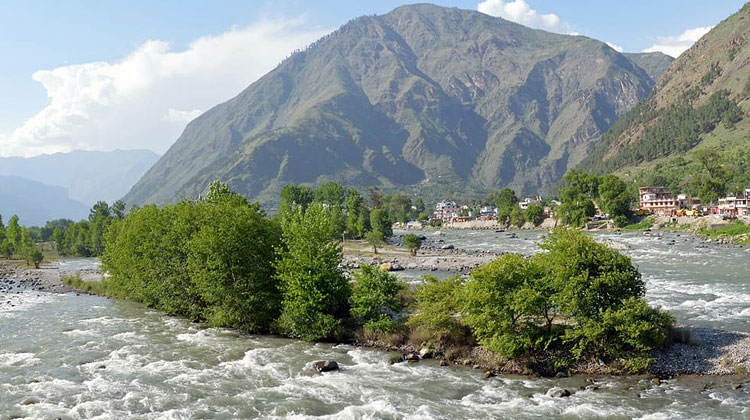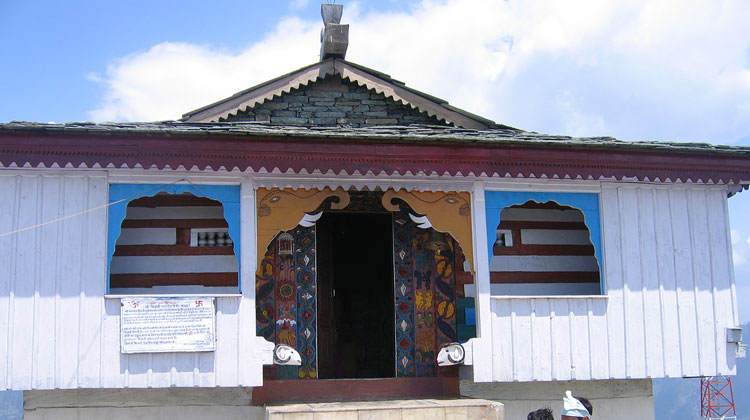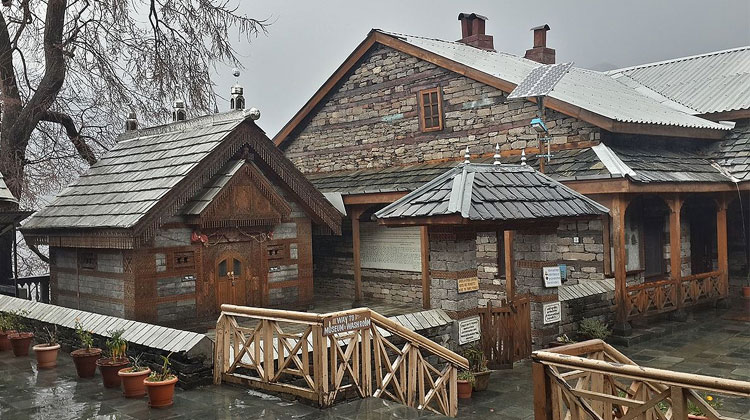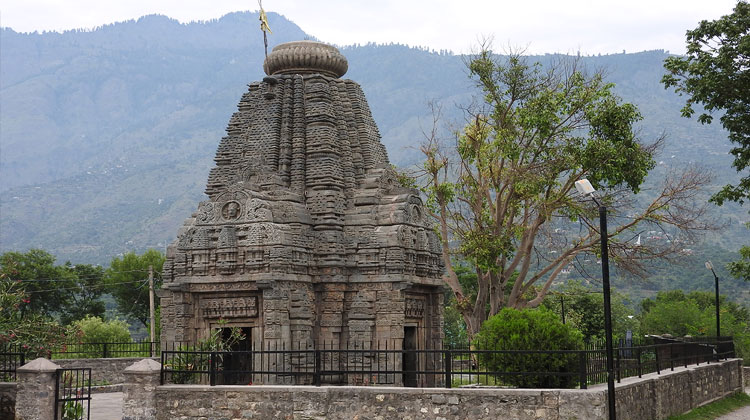-
Phone +91-9891275505
-
E-mail sales@eepltours.com
- Tour Enquiry !!!
Himachal Tour Packages
- Home
- Himachal Tourist Places
- Kullu
Kullu










Kullu
Location : Himachal Pradesh
Places of Interest : Kullu Dusshera
Best Time to Visit : Mid-May to Mid-October
Kullu was once known as Kulanthpitha, which means the end of the habitable world. Beyond rose the forbidding heights of the Greater Himalayas, and by the banks of the shining river Beas, lay the fabled 'Silver Valley'.
Here is the core of an intricate web of numerous valleys - each of which is a visual delight and seems more beautiful than the other. The mountain scapes remain spectacular whether in brilliant sunshine or in the haze of the mist. The 'Silver Valley' has nature's treasures that lie carelessly scattered as flowers on the high meadows.
The town of Kullu has long been a centre of faith. In the 17th century, Raja Jagat Singh installed here an idol of Lord Raghunathji, which he brought from Ayodhya. As a mark of his penance, he placed the idol on his throne and it became the presiding deity of the valley.
PRIME ATTRACTIONS
Raghunathji Temple: In the 17th century, Raja Jagat Singh of Kullu committed a great wrong. To atone for the sin he sent a senior courtier to Ayodhya for a statue of Lord Raghunath - Lord Ram. This temple was built by Raja Jagat Singh to house the image and even today, is greatly revered. The shrine houses an image of Shri Raghunath in his chariot.
Bijli Mahadev Temple: Set on a spur that offers some spectacular views, this temple is famous for its 20m high rod that periodically draws lightning, which shatters the 'Shivalinga' and scorches the building. Using only butter as adhesive, the 'linga' is then carefully pieced together by the temple pundit.
Basheshwar Mahadev Temple, Bajaura: This 9th century Shiva Temple is renowned for its intricate stone carvings.
The Vaishno Devi Temple : 4-km along the Kullu to Manali road is this temple with a small cave having an image of goddess Vaishno or Durga.
Jagannathi Devi Temple : This temple is in Bhekhli village, 3-km from Kullu. It's a stiff climb but from the temple one can catch fine views of the town.
Akhara Bazar: Known as one of the main bazaar, where Kullu caps, shawls, 'pattoos', gudmas, 'puhlas' and 'namdas' or rugs are sold in plenty.
Sultanpur Palace: It contains some fine examples of the Kullu style of miniature painting, characterised by simple rural scenes and the lack of human subjects.
Naggar: For 1400 years Naggar remained the capital of Kullu. Its 16th century stone and wood castle is now a hotel run by Himachal Tourism. Here, a gallery houses the paintings of the Russian artist, Nicholas Roerich. Naggar also has three other old shrines.
EXCURSIONS
Bajaura Temple: On the banks of the river Beas, about 200 m off the Kullu Mandi road at Hat or Hatta, is situated a massive pyramidal structure temple, decorated with images of Durga, Vishnu and Ganesh in the outer 3-sided shrines. Floriated scrollwork can be seen on the exterior walls. Inside this Shiva temple is a large yoni-lingam. It is 15-km from Kullu.
Parvati Valley/Manikaran: At 1737 m, here am hot sulphur springs that bubble next to the by waters of the Penal river. The place is revered by both Hindus and Sikhs Treks from here lead to Pulga, Khirganga and Mantalai' a stretch of considerable natural beauty. The route finally reaches the Pin Parvati Pass (4802 m), which opens into the Sutlej valley.
Kaisdhar: A picturesque spot, situated across a steep hill known for its magnificient scenery and innumerable walks.
Kasol: An open glade by the banks of the river Parvati, Kasol makes a good holiday destination. Clean white sand separates the lush green grass from the stone, this place is well known for trout fishing.
Shoja: At 2692 m, this is a vantage point for a complete panorama of the Kullu area-snow peaks and valleys, meadows and forests, rivers and streams.
Raison: By the banks of the Beas-and on the Kullu-Manali highway- Himachal Tourism runs a camping site here. This place is ideal for a taste of adventure and for spending a quiet holiday in solitary splendour.
Karrain: At about midpoint on Kullu-Manali road, this is the home of lush orchards and famous for bee-keeping and trout fishing. Khatrain is the widest point in Kullu Valley and is overlooked by the 3,325 m Baragarh peak.
Largi: Largi is a small hamlet, 34-km south of Kullu via Aut, offers the best trout fishing and scenic beauty in the valley. The rest-house there is in a stunning location where two Himalayan torrents, the Sainj and Tirthan, meet. Fishing permits can be obtained from Kullu and Largi itself.
Jagatsukh: Jagatsukh is the most ancient Kullu capital, situated on the left bank, between Nagar and Manali. Around the Jagatsukh secondary school playground there are two ancient temples - the small shrine of Gaurishankar and the larger chalet-roofed temple to the goddess Sandhya Devi, the stone base of which is much more ancient than the 19th-century wooden verandah and roof.
Deo Tibba: Also known as Indralika, this 2,953 metres (9,687 ft.) high snow dove Jagatsukh, has a legend around it, with Arjuna. He started performing 'tapa' at this mountain, under the advice of Maharishi Vyas, in order to obtain the powerful Pasupata Astra from Indra.
Banjar: It is about 58-km from Kullu at an altitude of 1,534m (5,000 ft.). Banjar is famous for its panoramic beauty and trout fishing in river Tirtham.
Nirmund: Situated in outer Seraj of Kullu district, Nirmund is at present a block headquarter. Known as 'Chhoti Kashi', it was once a seat of great scholars and intellectuals.
Bathad: A beautiful spot at a distance of 67-km can be approached by road from Kullu. It is recognized for adventurous games such as hunting, trout fishing and breathtakingly beautiful sites.
Malana: 30-km from Khatrain, near the beautiful Chandrakhani Pass, which offers striking views of Deo Tibba is the mysterious village of Malana. The village is basically famous for its temple of Jamlu and its distinct and fully reserved social and cultural set up.
Pulga, Khiranga and Mantalai: Almost level walk of two hours along Parvati river is Gattigarh, the rest place for trekkers. Around 4-km ahead on right side of river Parvati lies Pulga, which looks like the twin sister of Manali. Khiranga hot water fall is situated in beautiful natural setting and its water contains medicinal property. One thing has to be noted that taking bath in its water will put greasy touches to the body, unlike Manikaran, where one feels the touch of dryness. Covering another two kilometers from Khiranga lies Mantalai.
Chandra Khanni Pass: The tough climbing trek-route of Chandra Khani Pass lies east of Khatrain. The whole area looks wonderfully striking and colorful when the flowers in various brilliant hues, are in blossom.
WATER & ADVENTURE SPORTS
The Kullu valley has numerous places for trout fishing. These include Katrain, Raison, Kasol and Naggar, then along the river Tirthan near Lad, in the Sainj Valley and in the Hurla kund. The river Beas offers excellent opportunities for white water rafting.
The valley is the nucleus of several trek routes. Some major ones are over the Chanderkhani Pass to Malana and Pin Parbati Pass to Sarahan. The Jalora Pass lies 5-km beyond Shoja and gives access to the outer Seraj region of the Kullu Valley. From Chamba to Udaipur (Lahaul) over Sach Pass, can be completed by trekkers within a day span of nine or ten days.
HOW TO GET THERE
Air: The airport at Bhuntar is 10-km from Kullu, where taxis and buses are available.
Rail: The closest narrow gauge railhead is at Jogindernagar, 95-km from Kullu.
Road: By road, the distance from Delhi via Mandi is 530-km and from Shimla this is 240-km. From Delhi and Shimla, luxury buses ply to Kullu. There's a bus and taxi stand on the opposite side of maidan. The main bus stand is by river in the northern area of the town.
WHERE TO STAY
In Kullu accommodation is plentiful and inexpensive with options varying from govenment and private hotels to guest houses and tourist lodges.
CLIMATE
In winter, the temperature gets quite low when heavy woollens are required. It is pleasant in summer and cottons are recommended.
FAIRS & FESTIVALS
Kullu Dussehra
When Dussehra celebrations come to an end in the rest of the country, they begin at Kullu. Over 600 local deities come to pay homage to Lord Raghunathji. Enthusiasm marks the festival, with every road leading to Dhaulpur Maidan thronged by gaily-dressed, good-humoured crowds, folk dances, exhibitions, cultural programs are held to mark the festivities.
At the end of April, a colourful 3-day Cattle fair attracts villagers from the surrounding areas. During the Hill Fruit Show, sponsored by Department of Horticulture, Himachal Pradesh, best Kullu fruits are on display.
Dhoongri Fair
May gushes in with a whole series of river rafting festivals and water sports Regattas, throughout the state. Focused around the goddess Hadimba Devi, Kullu celebrates the Dhoongri fair.
Places of Interest : Kullu Dusshera
Best Time to Visit : Mid-May to Mid-October
Kullu was once known as Kulanthpitha, which means the end of the habitable world. Beyond rose the forbidding heights of the Greater Himalayas, and by the banks of the shining river Beas, lay the fabled 'Silver Valley'.
Here is the core of an intricate web of numerous valleys - each of which is a visual delight and seems more beautiful than the other. The mountain scapes remain spectacular whether in brilliant sunshine or in the haze of the mist. The 'Silver Valley' has nature's treasures that lie carelessly scattered as flowers on the high meadows.
The town of Kullu has long been a centre of faith. In the 17th century, Raja Jagat Singh installed here an idol of Lord Raghunathji, which he brought from Ayodhya. As a mark of his penance, he placed the idol on his throne and it became the presiding deity of the valley.
PRIME ATTRACTIONS
Raghunathji Temple: In the 17th century, Raja Jagat Singh of Kullu committed a great wrong. To atone for the sin he sent a senior courtier to Ayodhya for a statue of Lord Raghunath - Lord Ram. This temple was built by Raja Jagat Singh to house the image and even today, is greatly revered. The shrine houses an image of Shri Raghunath in his chariot.
Bijli Mahadev Temple: Set on a spur that offers some spectacular views, this temple is famous for its 20m high rod that periodically draws lightning, which shatters the 'Shivalinga' and scorches the building. Using only butter as adhesive, the 'linga' is then carefully pieced together by the temple pundit.
Basheshwar Mahadev Temple, Bajaura: This 9th century Shiva Temple is renowned for its intricate stone carvings.
The Vaishno Devi Temple : 4-km along the Kullu to Manali road is this temple with a small cave having an image of goddess Vaishno or Durga.
Jagannathi Devi Temple : This temple is in Bhekhli village, 3-km from Kullu. It's a stiff climb but from the temple one can catch fine views of the town.
Akhara Bazar: Known as one of the main bazaar, where Kullu caps, shawls, 'pattoos', gudmas, 'puhlas' and 'namdas' or rugs are sold in plenty.
Sultanpur Palace: It contains some fine examples of the Kullu style of miniature painting, characterised by simple rural scenes and the lack of human subjects.
Naggar: For 1400 years Naggar remained the capital of Kullu. Its 16th century stone and wood castle is now a hotel run by Himachal Tourism. Here, a gallery houses the paintings of the Russian artist, Nicholas Roerich. Naggar also has three other old shrines.
EXCURSIONS
Bajaura Temple: On the banks of the river Beas, about 200 m off the Kullu Mandi road at Hat or Hatta, is situated a massive pyramidal structure temple, decorated with images of Durga, Vishnu and Ganesh in the outer 3-sided shrines. Floriated scrollwork can be seen on the exterior walls. Inside this Shiva temple is a large yoni-lingam. It is 15-km from Kullu.
Parvati Valley/Manikaran: At 1737 m, here am hot sulphur springs that bubble next to the by waters of the Penal river. The place is revered by both Hindus and Sikhs Treks from here lead to Pulga, Khirganga and Mantalai' a stretch of considerable natural beauty. The route finally reaches the Pin Parvati Pass (4802 m), which opens into the Sutlej valley.
Kaisdhar: A picturesque spot, situated across a steep hill known for its magnificient scenery and innumerable walks.
Kasol: An open glade by the banks of the river Parvati, Kasol makes a good holiday destination. Clean white sand separates the lush green grass from the stone, this place is well known for trout fishing.
Shoja: At 2692 m, this is a vantage point for a complete panorama of the Kullu area-snow peaks and valleys, meadows and forests, rivers and streams.
Raison: By the banks of the Beas-and on the Kullu-Manali highway- Himachal Tourism runs a camping site here. This place is ideal for a taste of adventure and for spending a quiet holiday in solitary splendour.
Karrain: At about midpoint on Kullu-Manali road, this is the home of lush orchards and famous for bee-keeping and trout fishing. Khatrain is the widest point in Kullu Valley and is overlooked by the 3,325 m Baragarh peak.
Largi: Largi is a small hamlet, 34-km south of Kullu via Aut, offers the best trout fishing and scenic beauty in the valley. The rest-house there is in a stunning location where two Himalayan torrents, the Sainj and Tirthan, meet. Fishing permits can be obtained from Kullu and Largi itself.
Jagatsukh: Jagatsukh is the most ancient Kullu capital, situated on the left bank, between Nagar and Manali. Around the Jagatsukh secondary school playground there are two ancient temples - the small shrine of Gaurishankar and the larger chalet-roofed temple to the goddess Sandhya Devi, the stone base of which is much more ancient than the 19th-century wooden verandah and roof.
Deo Tibba: Also known as Indralika, this 2,953 metres (9,687 ft.) high snow dove Jagatsukh, has a legend around it, with Arjuna. He started performing 'tapa' at this mountain, under the advice of Maharishi Vyas, in order to obtain the powerful Pasupata Astra from Indra.
Banjar: It is about 58-km from Kullu at an altitude of 1,534m (5,000 ft.). Banjar is famous for its panoramic beauty and trout fishing in river Tirtham.
Nirmund: Situated in outer Seraj of Kullu district, Nirmund is at present a block headquarter. Known as 'Chhoti Kashi', it was once a seat of great scholars and intellectuals.
Bathad: A beautiful spot at a distance of 67-km can be approached by road from Kullu. It is recognized for adventurous games such as hunting, trout fishing and breathtakingly beautiful sites.
Malana: 30-km from Khatrain, near the beautiful Chandrakhani Pass, which offers striking views of Deo Tibba is the mysterious village of Malana. The village is basically famous for its temple of Jamlu and its distinct and fully reserved social and cultural set up.
Pulga, Khiranga and Mantalai: Almost level walk of two hours along Parvati river is Gattigarh, the rest place for trekkers. Around 4-km ahead on right side of river Parvati lies Pulga, which looks like the twin sister of Manali. Khiranga hot water fall is situated in beautiful natural setting and its water contains medicinal property. One thing has to be noted that taking bath in its water will put greasy touches to the body, unlike Manikaran, where one feels the touch of dryness. Covering another two kilometers from Khiranga lies Mantalai.
Chandra Khanni Pass: The tough climbing trek-route of Chandra Khani Pass lies east of Khatrain. The whole area looks wonderfully striking and colorful when the flowers in various brilliant hues, are in blossom.
WATER & ADVENTURE SPORTS
The Kullu valley has numerous places for trout fishing. These include Katrain, Raison, Kasol and Naggar, then along the river Tirthan near Lad, in the Sainj Valley and in the Hurla kund. The river Beas offers excellent opportunities for white water rafting.
The valley is the nucleus of several trek routes. Some major ones are over the Chanderkhani Pass to Malana and Pin Parbati Pass to Sarahan. The Jalora Pass lies 5-km beyond Shoja and gives access to the outer Seraj region of the Kullu Valley. From Chamba to Udaipur (Lahaul) over Sach Pass, can be completed by trekkers within a day span of nine or ten days.
HOW TO GET THERE
Air: The airport at Bhuntar is 10-km from Kullu, where taxis and buses are available.
Rail: The closest narrow gauge railhead is at Jogindernagar, 95-km from Kullu.
Road: By road, the distance from Delhi via Mandi is 530-km and from Shimla this is 240-km. From Delhi and Shimla, luxury buses ply to Kullu. There's a bus and taxi stand on the opposite side of maidan. The main bus stand is by river in the northern area of the town.
WHERE TO STAY
In Kullu accommodation is plentiful and inexpensive with options varying from govenment and private hotels to guest houses and tourist lodges.
CLIMATE
In winter, the temperature gets quite low when heavy woollens are required. It is pleasant in summer and cottons are recommended.
FAIRS & FESTIVALS
Kullu Dussehra
When Dussehra celebrations come to an end in the rest of the country, they begin at Kullu. Over 600 local deities come to pay homage to Lord Raghunathji. Enthusiasm marks the festival, with every road leading to Dhaulpur Maidan thronged by gaily-dressed, good-humoured crowds, folk dances, exhibitions, cultural programs are held to mark the festivities.
At the end of April, a colourful 3-day Cattle fair attracts villagers from the surrounding areas. During the Hill Fruit Show, sponsored by Department of Horticulture, Himachal Pradesh, best Kullu fruits are on display.
Dhoongri Fair
May gushes in with a whole series of river rafting festivals and water sports Regattas, throughout the state. Focused around the goddess Hadimba Devi, Kullu celebrates the Dhoongri fair.
Similar Tour Packages
Kullu Tour : Booking Form
Fill the booking form our travel expert will contact you within 24hrs.

